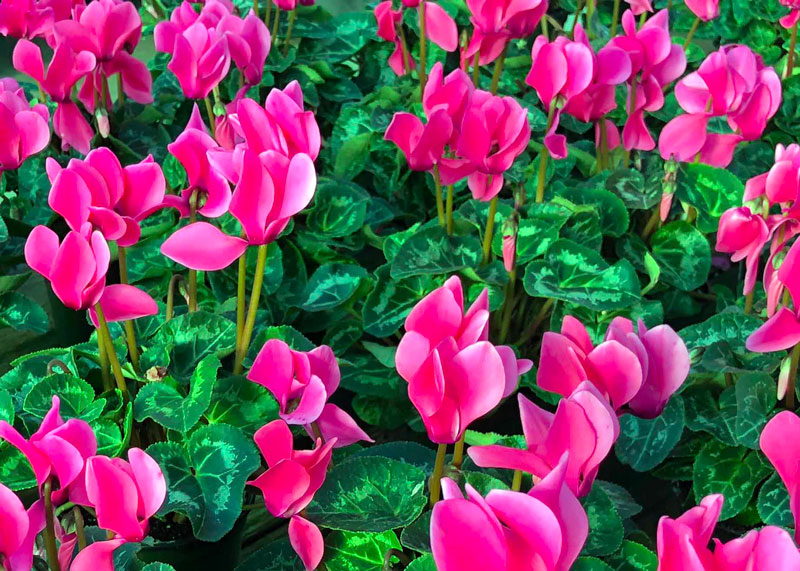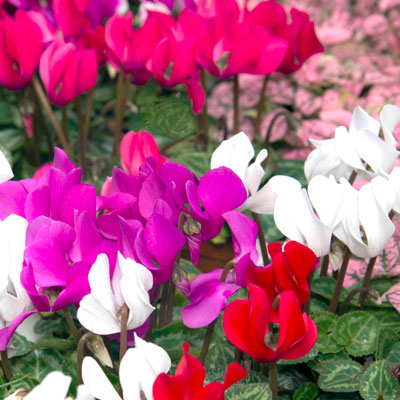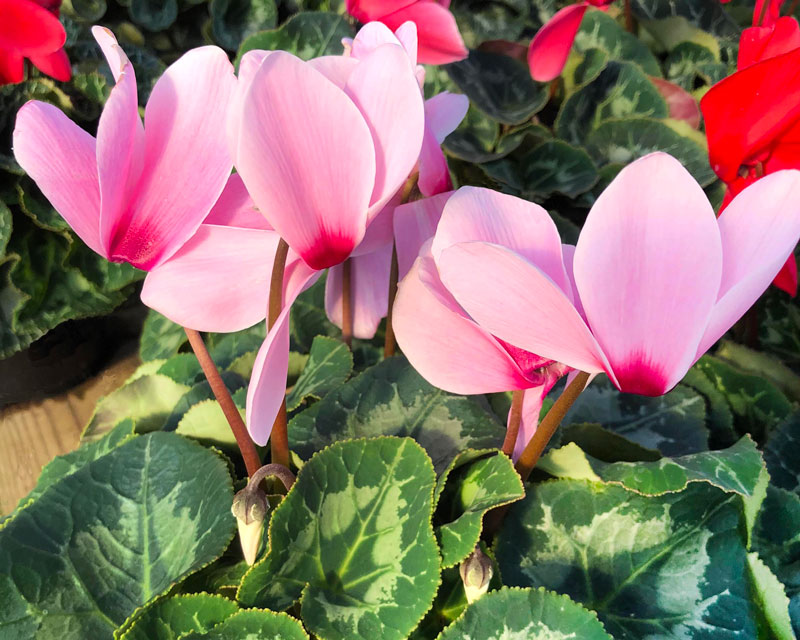Stunning Changes in Cyclamen

When I was a young horticulturist just getting started in greenhouse production of flowering plants, we spent a few moments learning about cyclamen. Moments. They were just too difficult, too slow, too demanding, and therefore, too expensive. Nobody wanted to grow them.
Hybridizers, many of them foreign, however, have developed types that can be grown and finished more quickly. They can be produced by specialty growers as “plugs” (very small potted transplants). Those plugs can be started in a cooler region, then affordably shipped into Texas in fall for growing on during cooler months. And they have stunning jewel-like foliage and a rich assortment of flower colors.

All this began about 30 years ago, and if you visit a florist or garden center near you today you’ll see what I mean. You’ll find an almost endless selection of cyclamen colors waiting their chance at gracing your holiday home.
The facts about cyclamen…
• Scientific name: Cyclamen persicum
• Common name: Standard cyclamen or Persian cyclamen
• Native home: Mediterranean area, including Northern Africa, western Asia and Greece
• Height and width (in bloom) 10 in. x 10 in.
• Hardiness Zones: 9-11 (tolerant of light freezes)
• Annual or perennial: Species types are perennials, but we usually see hybrids that are best treated as cool-season annuals. It’s difficult to pull them through our Texas summers.

• Flower colors: Red, pink, lavender, purple, violet, white, and two-toned
• Flower forms: Inverted, resembling flittering butterfly or shooting star
• Blooming season: Late fall, winter and spring
• Leaf colors: Silvery gray-green, frequently boldly banded
• Grown from seed or, to lesser degree, bulbs (neither by Neil – I’ll spoil myself on this one. I’ll buy my plants already in full bud and bloom and enjoy them from Day One.)
• Watering: Keep plants moist, but do not allow them to remain wet for prolonged periods. Water plants around edges of pots, not in crowns of plants.

• Best uses: In pots at entries or on patios – places where they can be brought into protection during sub-freezing weather. Indoors in coolest, brightest rooms away from heat registers. In South Texas planted into beds and covered should temperatures drop below freezing.

